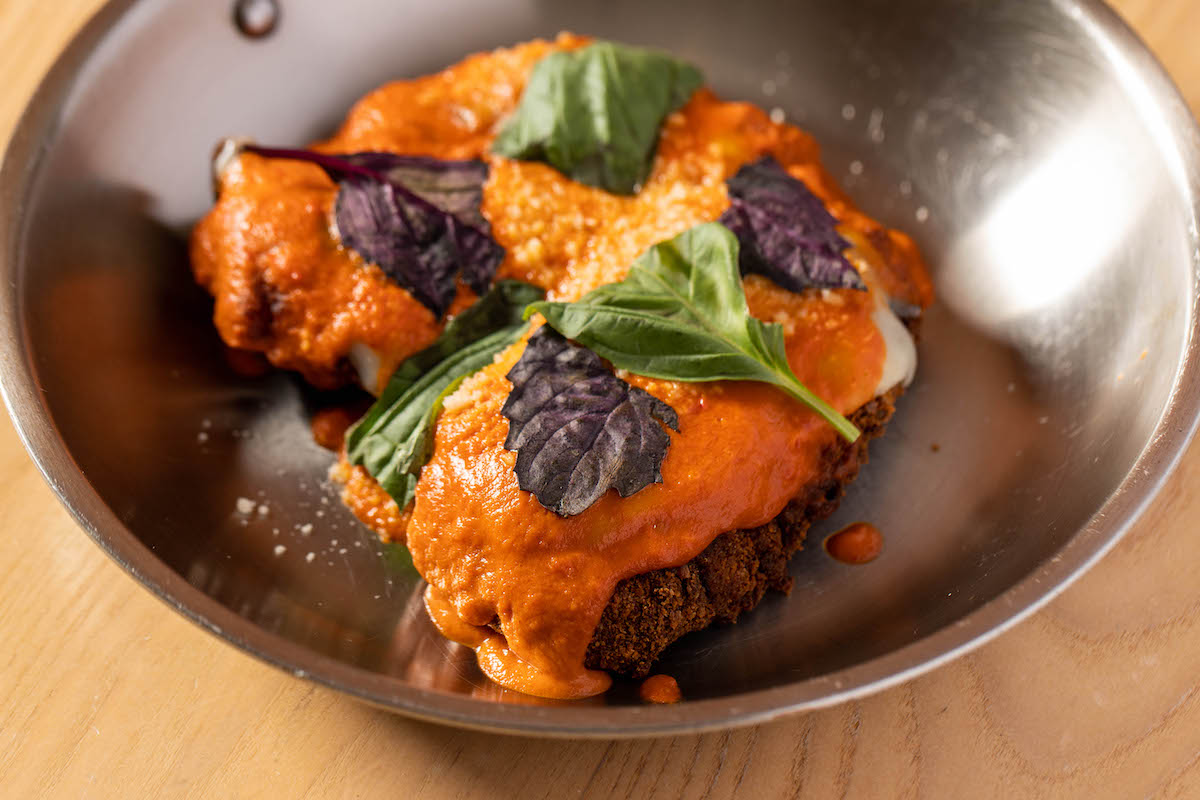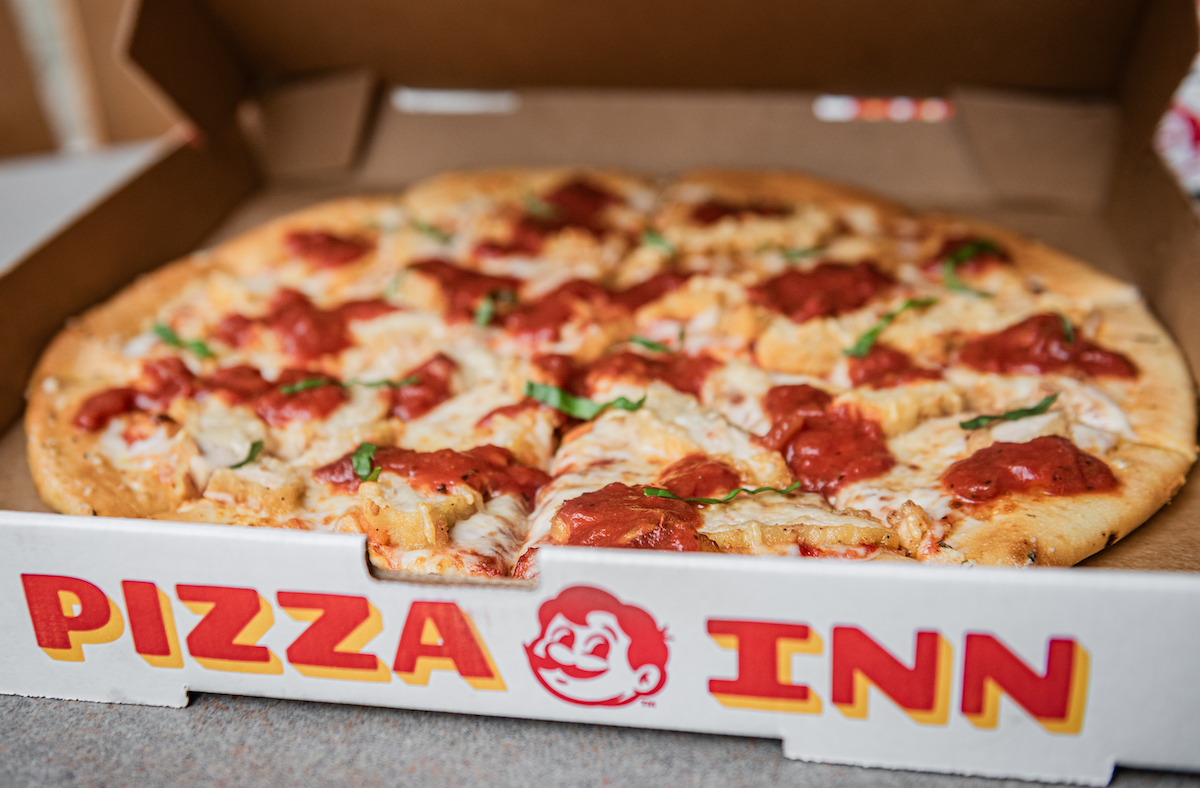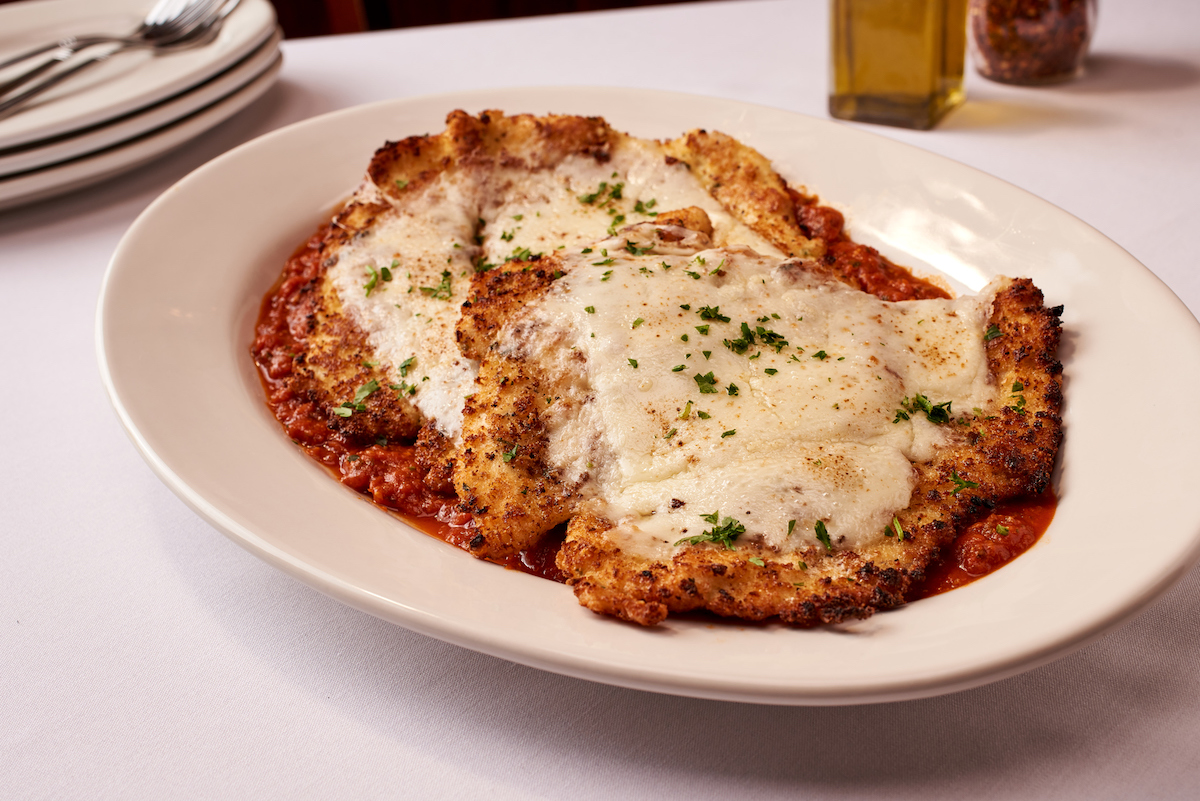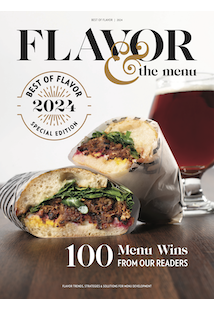
The Enduring and Evolving Appeal of Chicken Parm
Flavorful riffs from classic to contemporary
The Enduring and Evolving Appeal of Chicken Parm
Flavorful riffs from classic to contemporary
By Nicole Duncan
November 6, 2024
By Nicole Duncan
November 6, 2024
Like spaghetti and meatballs, chicken Parmesan isn’t an authentic Italian dish in the strictest sense of the word. Instead, it’s considered an amalgamation of other Italian dishes, such as eggplant Parmesan and cotoletta (breaded veal cutlet). But in terms of Italian-American cuisine, it’s a classic that catapulted into the restaurant scene some 70 years ago and has remained a mainstay ever since.
“Chicken Parm is so popular in the States because it’s a unique way to serve chicken to your family and/or guests,” says Glenn Rolnick, director of culinary operations for Alicart Restaurant Group, the parent company of Carmine’s. “Our Chicken Parmigiana is, without a doubt, one of our most popular dishes in all of our Carmine’s locations since our inception almost 35 years ago.”
It’s rare to find an Italian restaurant in the U.S. that doesn’t include some version of chicken Parmesan on the menu. The traditional build comprises breaded chicken cutlets, tomato sauce, fresh mozzarella and Parmesan. And while pan-frying may be the most common cooking technique, Rolnick points out that the dish can be roasted, baked or even grilled.
Chicken Parmesan may be timeless, but it can also be reconceptualized in myriad ways, from swapping ingredients to switching up cooking techniques to serving it in a different format. Earlier this year, multi-unit fast casual Honeygrow challenged the paradigm with its Chicken Parm Stir-Fry. The LTO featured freshly prepared egg white noodles, roasted chicken, grape tomatoes, bell peppers, red onions, seasoned breadcrumbs, parsley and shaved Parmesan, tossed in a savory housemade tomato-basil sauce.
While the brand doesn’t bill itself as an Asian cuisine concept per se, the menu (particularly the bowls) leans in that direction, with permanent offerings such as Sriracha-Tahini Stir-Fry and Sweet Soy Five Spice. Save for Caesar salads and sides of herbed focaccia bread, Italian influence is scant, marking this special as a departure from the usual lineup. “Our LTOs are meant to add variety and culinary creativity to the menu. The goal of the Chicken Parm Stir-Fry was to give our guests a healthy take on a traditional, winter comfort meal, and it was very popular among our customers,” says Amy DePaoli, director of marketing.
Just a few months after Honeygrow’s Chicken Parm Stir-Fry debuted, Pizza Inn introduced its own LTO focused around the dish. Still playing within the Italian flavor system, the brand adapted the dish to fit a different category. “The idea was to combine the comfort of a classic, home-cooked family dinner with the fun and convenience of pizza,” says Brandon Solano, CEO of Rave Restaurant Group, which owns Pizza Inn.
 Photo Credit: Pizza Inn
Photo Credit: Pizza Inn Pizza Inn’s Chicken Parmesan LTO puts a modern and casual twist on the classic dish, incorporating its key ingredients into a pizza build.
While the format was unconventional, the Chicken Parmesan Pizza “maintained the integrity of the traditional dish with key ingredients like hand-breaded chicken, marinara sauce and mozzarella cheese,” Solano adds. This tactic had the benefit of appealing to fans of the classic recipe, as well as Pizza Inn enthusiasts who enjoy sampling the brand’s revolving LTO options.
Danny Boys, a six-unit Ohio restaurant, specializes in pizza and Italian-American fare. The permanent menu includes a chicken Parmesan (two breaded chicken breasts baked with marinara sauce and five-cheese blend atop a bed of angel hair pasta), but over the years, Danny Boys has also incorporated the dish into a trio of handhelds. The Chicken Parm Stacker, for instance, tucks the original ingredients (excepting the pasta) into a warm bun. The Luca Brasi Sub makes a slight modification by slicing the chicken rather than serving the breast whole, and the Chicken Parm Woogie bakes the sauce- and cheese-smothered chicken inside the brand’s signature dough for a stromboli-style dish.
“Each version with its own merits did extremely well on our menus, but none have stood truer than the classic itself,” says Jason Meyer, managing partner of the Canton location. “We try to keep with the classic version of chicken Parm while still having that flair for something different, which is just the Danny Boys’ way.”
Other restaurants eschew the typical recipe—a move that can both distinguish the dish and potentially elevate it. Such is the case at Ospi, a casual yet refined trattoria-style concept with locations in Venice and Brentwood, Calif. Its version—billed as Butter Chicken but prepared “Parm-style”—uses cultured brown butter for extra depth of flavor and also makes a crucial sauce swap.
“Our twist on chicken Parm pairs crispy, golden chicken with rich, gooey mozz, fresh basil and Chef Jackson Kalb’s signature spicy vodka sauce, served right in the pan,” says Tara Kelly, marketing manager for parent group Memento Mori Hospitality. Vodka sauce is also an Italian-American invention, making it an especially complementary addition to chicken Parmesan. The vodka intensifies the flavor of the tomatoes while simultaneously emulsifying the cream, which, in turn, delivers a thicker, more luscious mouthfeel than marinara.
“This vibrant, flavor-packed version is a hit with guests, who love the unique yet comforting spin on a timeless dish,” she adds. “It’s a bold reimagining of an Italian favorite.”
Although the opportunities for signature riffs and fresh reimaginings are plentiful, many chefs and menu developers still enjoy the subtle challenge of refining a dish within its established parameters.
 Photo Credit: Carmine’s
Photo Credit: Carmine’s Since Carmine’s first opened nearly 35 years ago, the Chicken Parmigiana has remained one its most popular dishes.
“Some chefs will try preparations using vodka sauce, carbonara sauce or pesto sauce. They’ll add fried or grilled slices of eggplant under the cheese or top it with shaved prosciutto or soppressata. My favorite is still the original technique,” says Carmine’s Rolnick. Nevertheless, the brand does deviate from the norm on some fronts. For one, the chicken cutlets aren’t pounded. “Our butchers are so accurate and precise that they slice the cutlet perfectly. The quality of breast we buy is also always tender, so they don’t need to be pounded to tenderize.”
The cutlets are tossed in a seasoned flour with salt and pepper, dipped in beaten eggs and then generously coated in breadcrumbs for that signature crunch. Rather than the eponymous Parmesan cheese, Carmine’s uses its close cousin pecorino Romano, as well as garlic and additional seasoning. After pan-frying until crispy and golden, the cutlets are topped with whole-milk mozzarella and additional pecorino, which are melted under a salamander. In the final step, the chicken is served atop housemade marinara.
“The combination of this makes for a simple but tasty dish that you can always put over some of your favorite pasta,” Rolnick says, adding that it’s nothing short of “love at first bite.”
About the Author
![]() Nicole Duncan is the digital managing editor of Flavor & the Menu. She's reported on the restaurant industry for a decade, most recently as the editor of FSR magazine. In 2021, she won a Folio award for her feature on restaurant tycoon Tilman Ferttita. The following year, FSR was awarded Best Overall Issue for its May 2022 issue featuring Andrew Zimmern. She has profiled well-known chefs including Paola Velez, Fabio Viviani and Daniel Boulud, but also relishes the opportunity to spotlight under-the-radar trends and innovators.
Nicole Duncan is the digital managing editor of Flavor & the Menu. She's reported on the restaurant industry for a decade, most recently as the editor of FSR magazine. In 2021, she won a Folio award for her feature on restaurant tycoon Tilman Ferttita. The following year, FSR was awarded Best Overall Issue for its May 2022 issue featuring Andrew Zimmern. She has profiled well-known chefs including Paola Velez, Fabio Viviani and Daniel Boulud, but also relishes the opportunity to spotlight under-the-radar trends and innovators.







